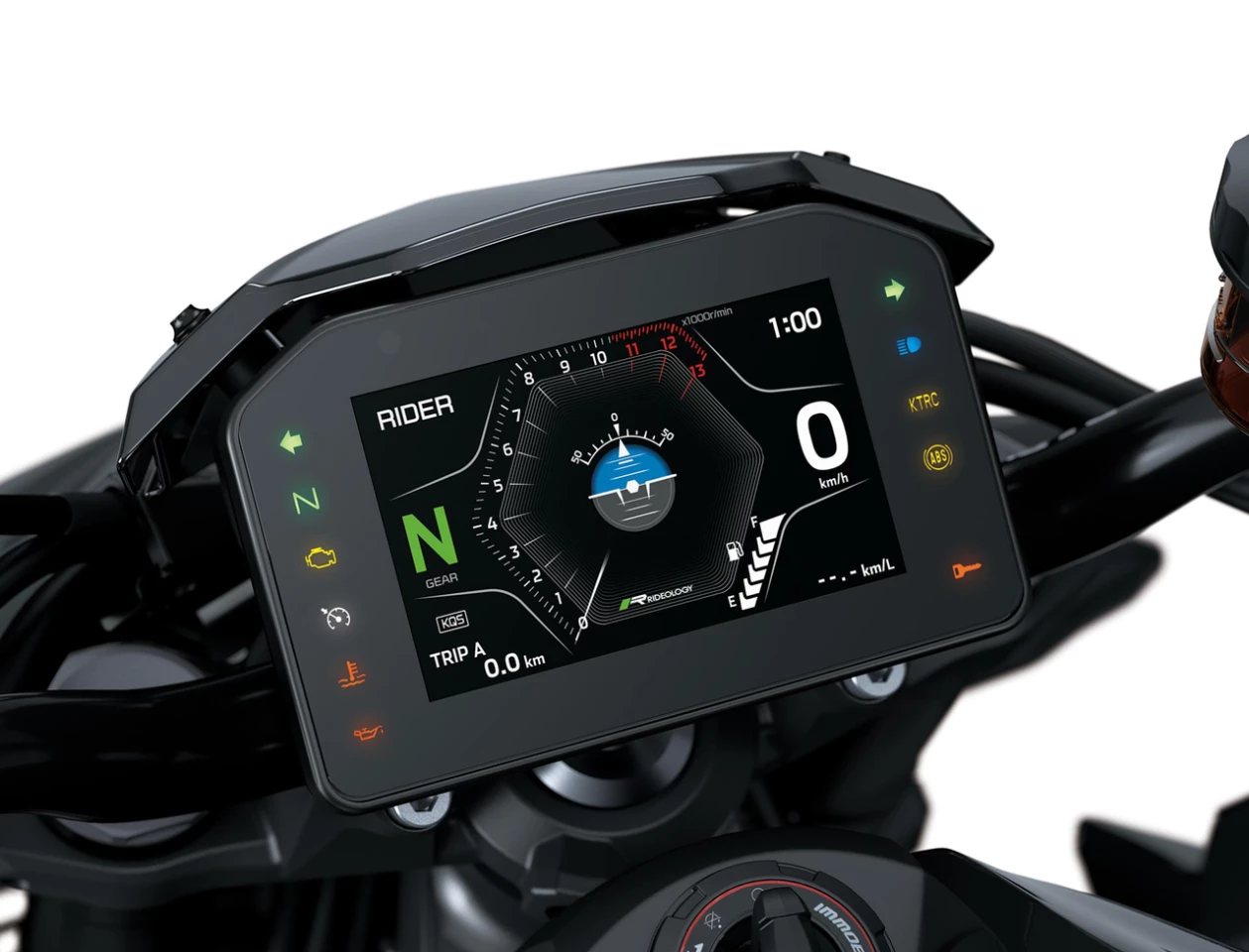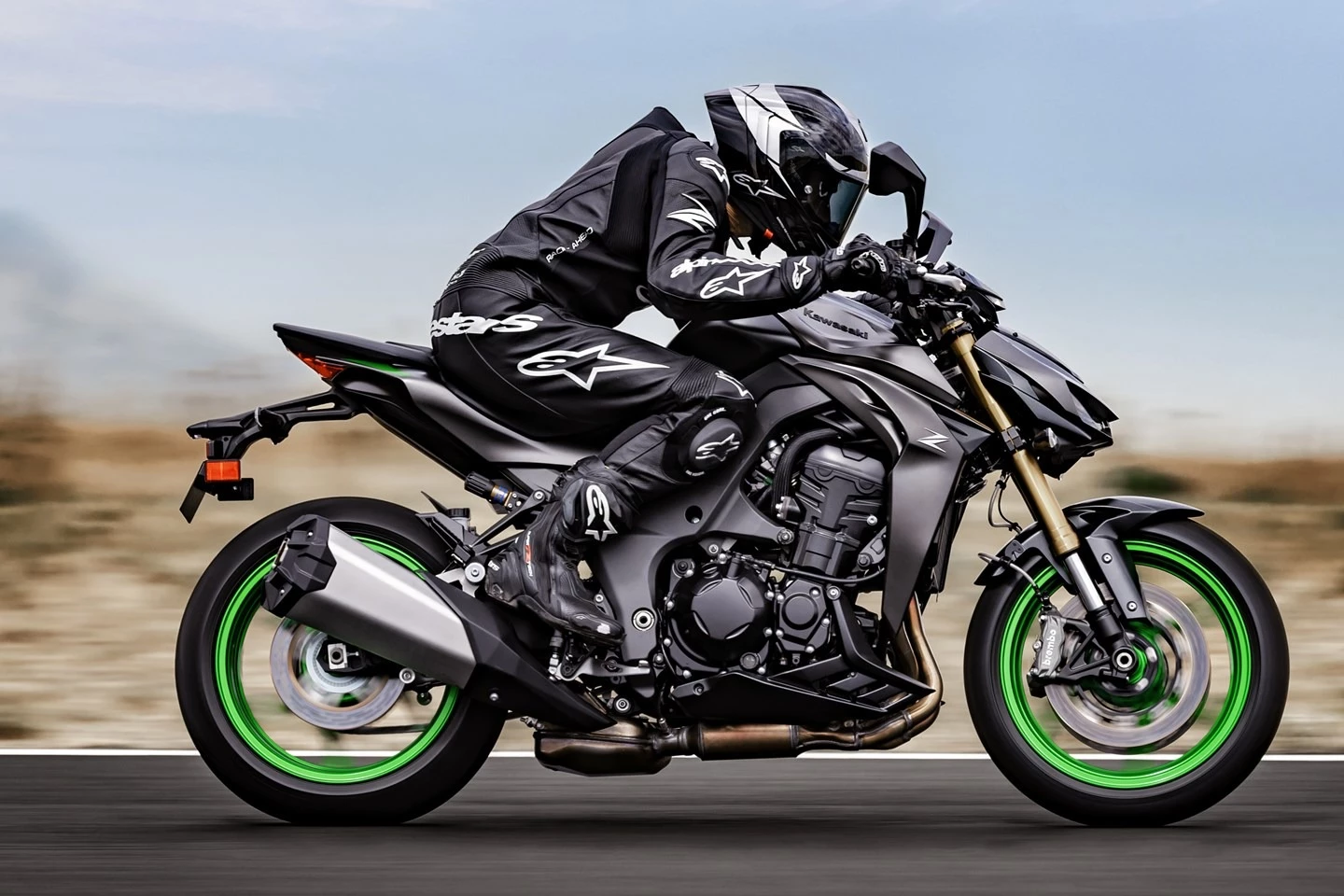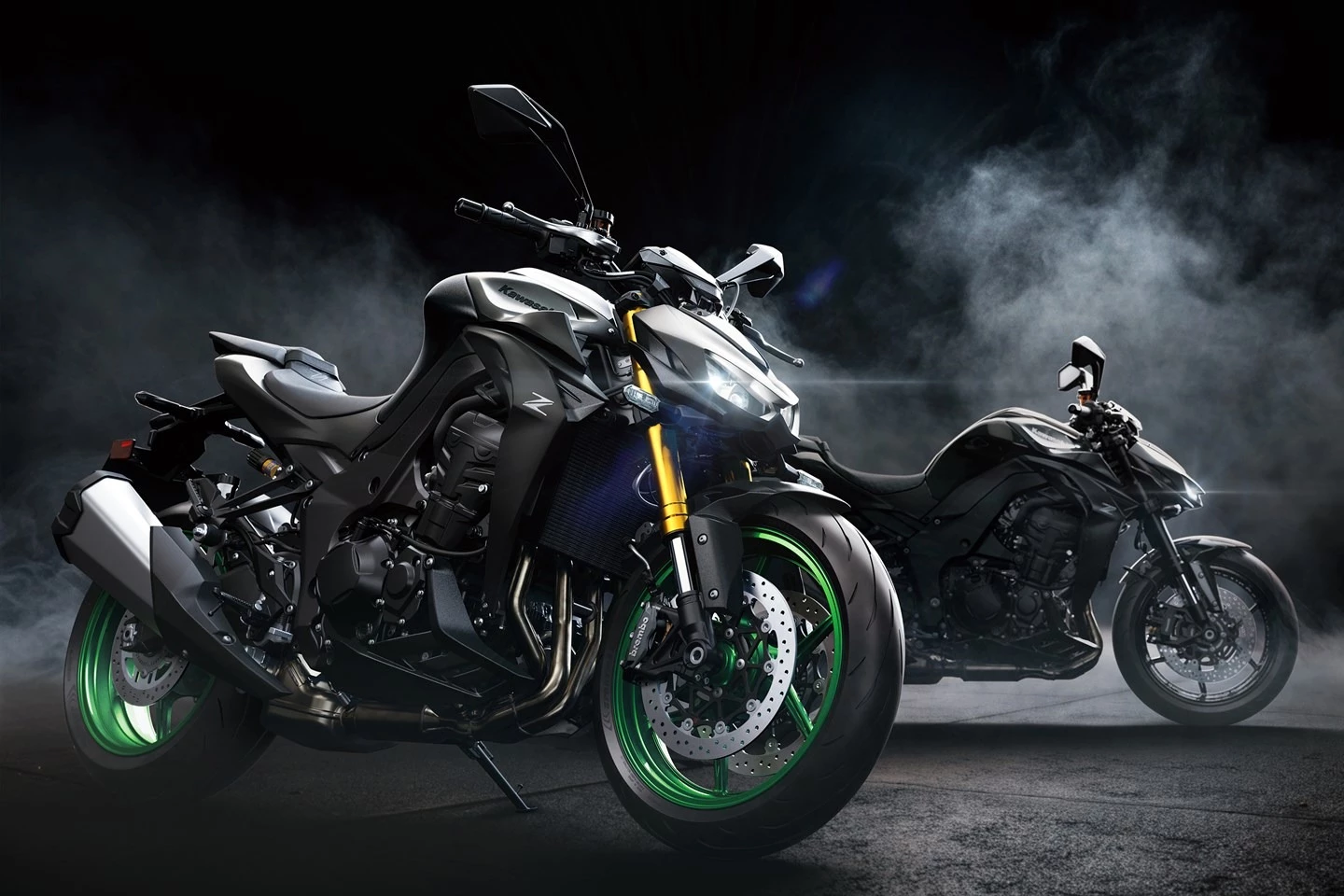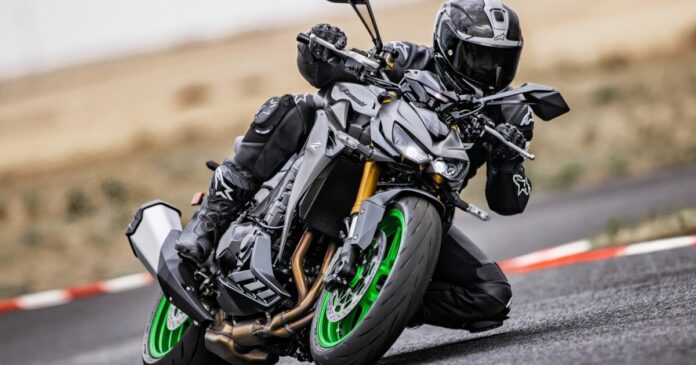When the Kawasaki “Big Zed” naked was discontinued a few years back, it broke the hearts of many a folk. Some moved on, mostly to the Honda CB1000 Hornet. Others simply chose to live in the ghost of days gone by.
Now, in 2025, Kawasaki has chosen to bring back the liter-class motorcycle, and much to the whims of many, carries the same “Sugomi” ideology as the Z1000, which was last on sale in the USA in 2016 and in the UK in 2020.
And there’s not one, but two iterations – with the Z1100 and Z1100 SE. The bikes run on the same 1,099 inline-four mill found on the Versys 1100 and Ninja 1100SX. But Kawasaki has made subtle changes, including an additional 3 mm of stroke, which makes the engine comparable to the 1,043cc motor used on the earlier 1000 versions.
Kawasaki
That’s not all there is to it – the company has also updated the intake ports, camshaft profiles, valve springs, and pistons, while additionally incorporating a stronger flywheel. The output, you ask? It’s 134 horsepower at 9,000 rpm and 83.3 lb-ft (113 Nm) at 7,600 rpm.
That means it generates greater torque than the Z1000, which produced 81.8 lb-ft (111 Nm). The now-discontinued naked did produce greater power, but it kicked in at around 10,000 rpm – exactly 1,000 revs more.
The motor is linked to a six-speed slip/assist-equipped gearbox. The biggest update, though, comes in the form of a 4-2-1 exhaust on the right side, which takes the place of the former double-exhaust design.
Adding to the list of changes, it gets upgraded LED lighting, a revised undercowl with fin-shaped apertures, plus a new handlebar that is 0.9 inches (22 mm) broader and 0.5 inches (13 mm) farther forward. This change, as one would expect, is to enhance the bike’s ergonomics rather than cosmetic.

Kawasaki
In addition to the standard Sport, Road, and Rain modes, the Z1100 also gets a special Rider mode. Electronic aids like lean-sensitive traction control, wheelie control, slide control, Kawasaki Intelligent anti-lock Braking System (KIBS), and engine brake control are all part of the Kawasaki Corner Management Function, which is unlocked by a six-axis IMU.
Further on, standard features come in the form of a bidirectional quickshifter and cruise control owing to new Electronic Throttle Valves. All of the electronic settings can be controlled by a new 5-inch TFT color display, which also provides smartphone connectivity through Kawasaki’s Rideology app and turn-by-turn navigation.
The twin-tube aluminum frame and the fully adjustable 41-mm upside-down Showa SFF-BP fork are carried over as is, from its predecessor. A monoshock takes care of the rear suspension – both offer preload adjustment, compression, and rebound damping.
The SE trim features Brembo M4.32 monoblock calipers connected to steel braided brake lines, as opposed to a 310-mm front disc on the standard variant. Alongside, there’s a more premium Öhlins S46 shock absorber with a remote preload adjuster. It also gets a more expansive paint job, plus gold wheels and gold fork stanchions.

Kawasaki
Both models roll off the production line on Dunlop Sportmax Q5A tires. A 32-inch (815 mm) seat height, a somewhat hefty 487.2-lb (221-kg) kerb weight ought to disappoint shorter and lighter riders. The 4.5-gallon (17-liter) fuel tank does seem adequate enough to take you far enough while you’re out having fun.
The supernaked, for now, has been confirmed for Europe, where it is expected to be available with dealers by the end of this month. A USA launch is more or less a given and should follow soon.
As for pricing, the Z1100 has been priced at £11,099 for the standard trim, while the plush SE gets a £12,699 price tag. That’s around US$14,800 for the standard and $16,940 for the Z1100 SE per direct conversions.

Kawasaki
It should be noted that manufacturers hardly ever use that rule when pricing their bikes for different markets. As Motorcycle.com points out, comparing the prices for the Z900 and Z900 SE naked inline-four reveals that the standard model is priced at £ 9,199/$9,999 in the UK and the USA, respectively, while the SE model is priced at £11,349/$11,849. By those conversion metrics, you can expect the Z1100 to be priced at around $12,000 and the Z1100 at around the $14,000 mark. But that’s guesswork at best, at this moment.
What matters is that Kawasaki’s top-of-the-line naked is back, and I reckon it will have plenty of fans ready to shed some skin to have a go at it again. Good times, indeed!
Source: Kawasaki


